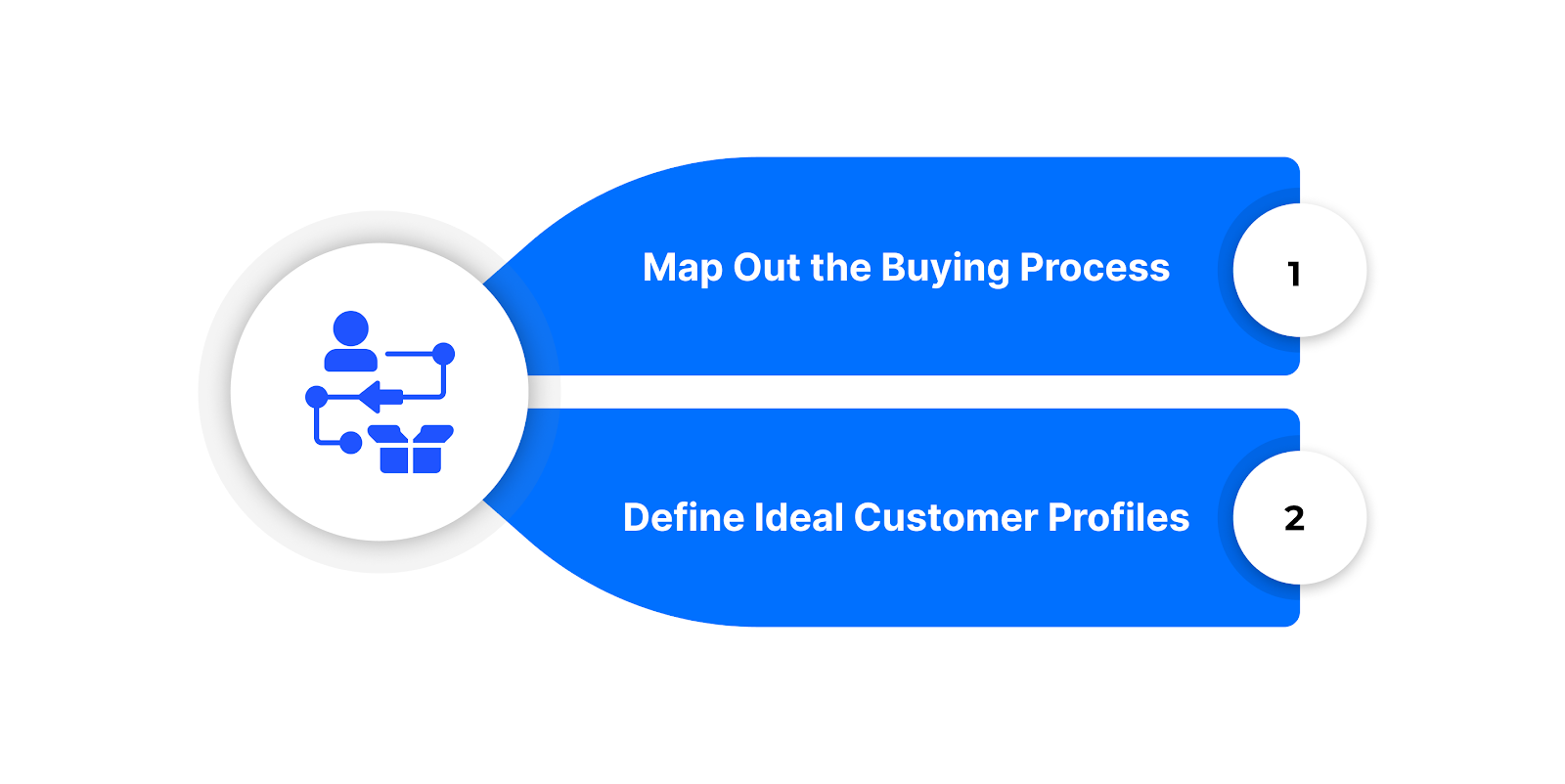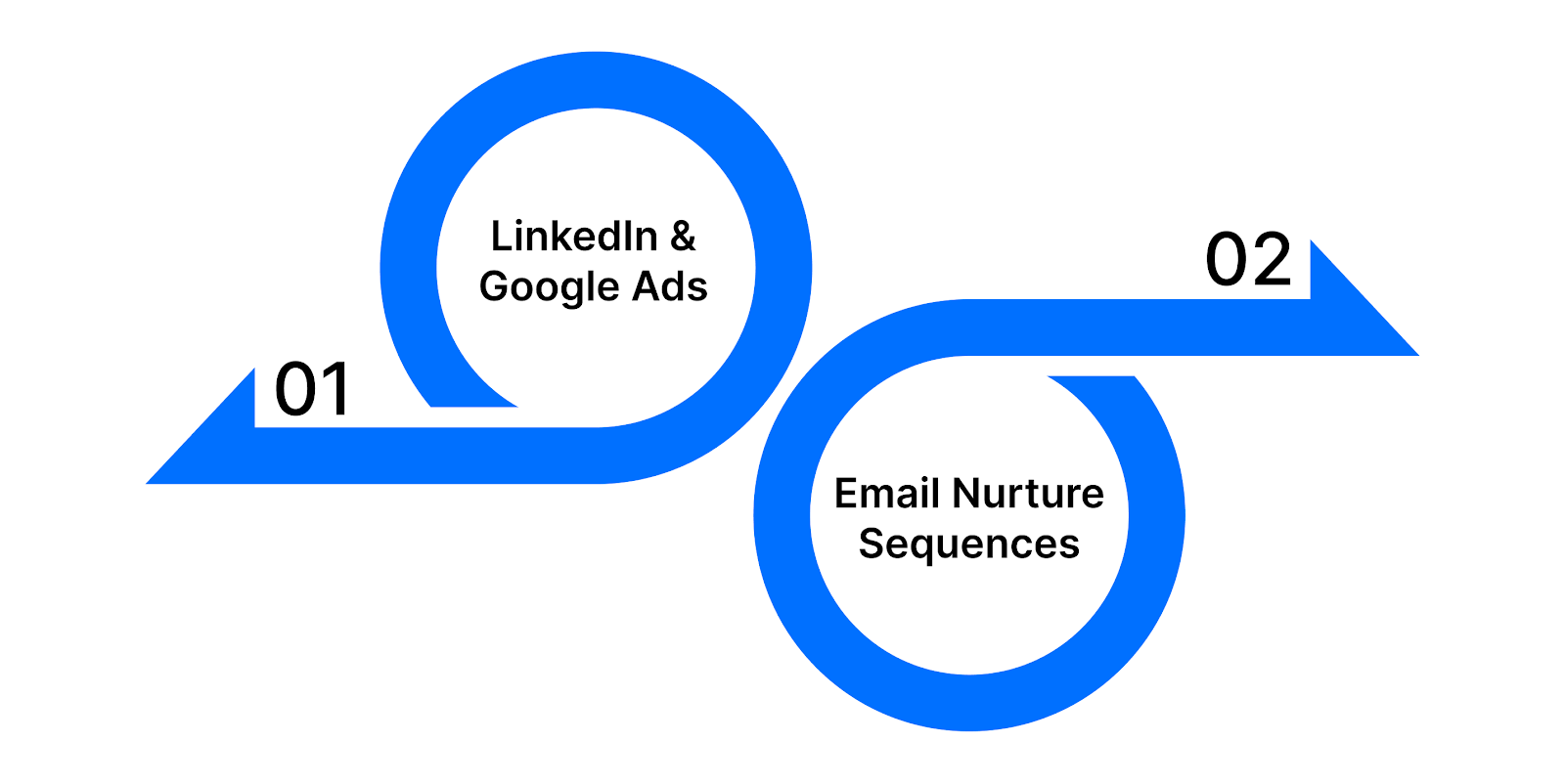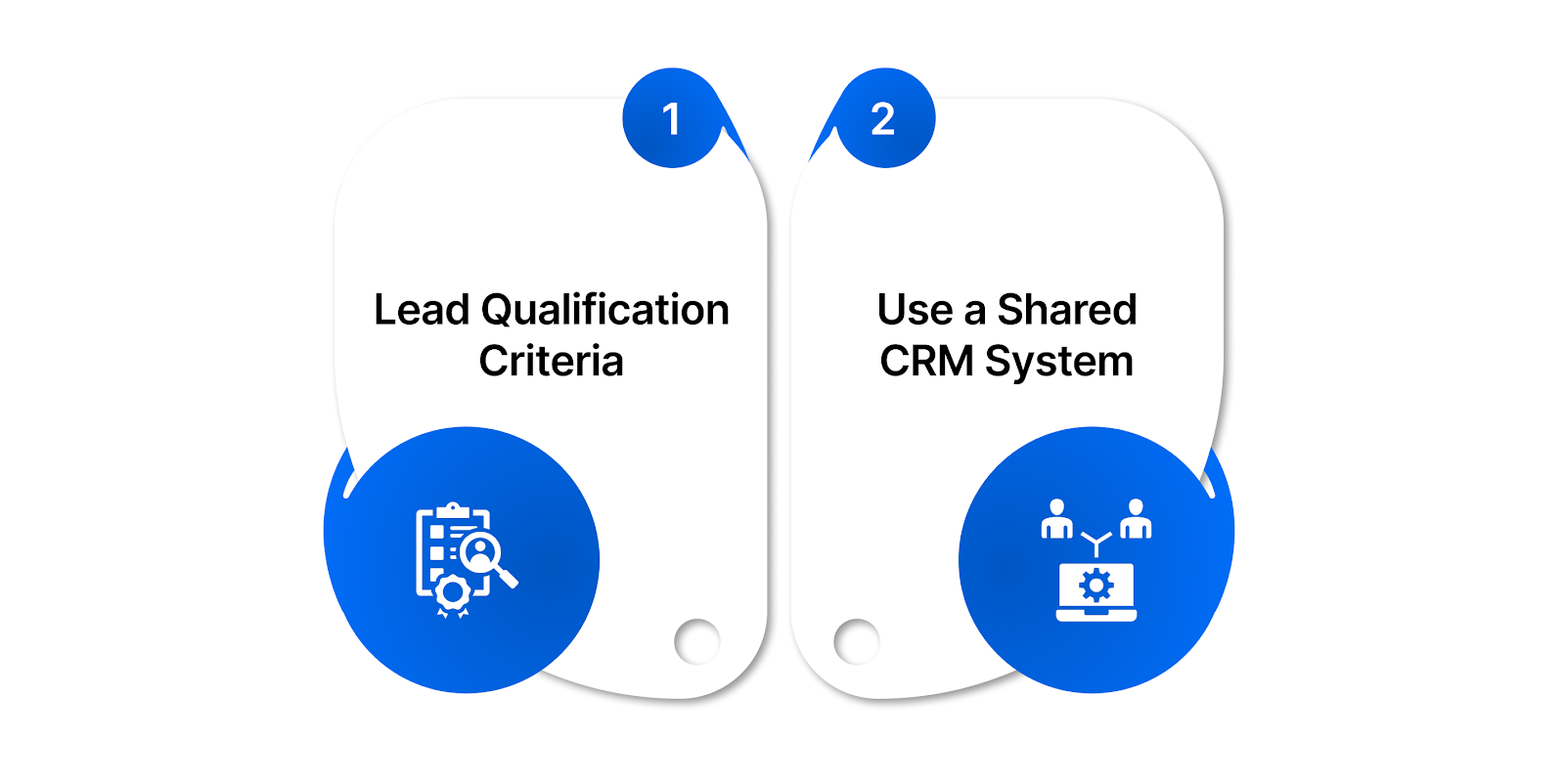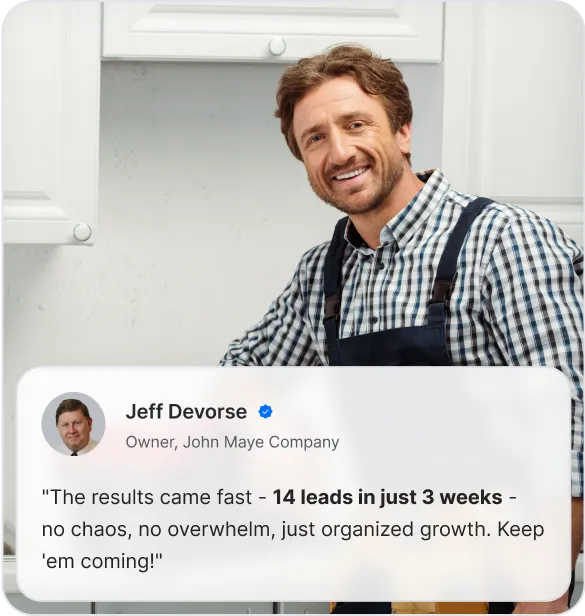Manufacturers are built on precision, planning, and process. Every part of the operation relies on systems that keep work moving and output consistent. But when it comes to lead generation, that same structure is often missing.
Instead of a steady pipeline, leads arrive in bursts. Sales teams swing between overloaded and idle. Marketing efforts change direction too often to gain traction. What should be predictable turns into trial and error.
That’s the gap this guide addresses.
In this guide, you’ll see how modern lead generation works for manufacturing companies, why some approaches fall flat, and what it takes to build a system that produces consistent, qualified opportunities.
The Starting Point for Real Manufacturing Leads
Before you learn how to generate leads, you need to know what a lead is in a manufacturing context. Most teams mix up inquiries, quotes, tire-kickers, and actual leads. When everything gets lumped together, the whole process feels messy and unpredictable.
A real lead isn’t just someone who visits your website or downloads something. A lead is someone who meets the basic criteria that make a project worth your time.
- Industry fit.
- Budget range.
- Volume.
- Timeline.
- Application.
When you define this clearly, your entire approach becomes easier. You understand what you’re trying to attract. And you start seeing patterns that help you improve your process.
This is the starting point manufacturers often skip. Lead generation isn’t only about bringing in more inquiries. It’s about knowing which inquiries matter so you can build a system around attracting more of those. Once you get this part right, everything else in your strategy becomes far more focused and effective.
Understand the Manufacturing Buyer Journey

Before launching any campaign or investing in new tools, you need to understand exactly how your customers make purchasing decisions. Manufacturing buyers don't impulse-buy; they research, compare, and evaluate options over weeks or months. Getting this wrong means wasting time on leads that were never going to buy or missing opportunities with buyers who are ready to purchase.
1. Map Out the Buying Process
The manufacturing buyer journey typically follows a predictable path, but it's longer and more complex than most other industries:
- Awareness Stage: Engineers or procurement teams recognize they have a problem or need. They might search for general solutions like "industrial coating systems" or "custom metal fabrication."
- Research Stage: They dive deeper into specifications, applications, and technical requirements. This is where they consume whitepapers, case studies, and technical documentation.
- Comparison Stage: Multiple vendors are evaluated based on capabilities, pricing, certifications, and past performance. References and customer testimonials become vital.
- Purchase Stage: Final negotiations, contract terms, and implementation planning take place.
What makes manufacturing unique is the involvement of multiple stakeholders:
- Technical buyers (engineers, designers) focus on specifications and performance
- Economic buyers (procurement, finance) prioritize cost and ROI
- Decision-makers (plant managers, executives) consider strategic fit and risk
Long lead times mean you need nurturing systems that stay engaged with prospects for months, not days. A single touchpoint rarely converts, except 8-12 interactions before a qualified lead becomes a customer.
2. Define Ideal Customer Profiles (ICPs)
Not all manufacturers are created equal, and your lead generation efforts should reflect that reality. Start by segmenting your ideal customers based on:
- Industry verticals: Automotive, aerospace, medical devices, and consumer goods all have different buying patterns and decision criteria.
- Company size: Small job shops move fast but have limited budgets. Large OEMs have bigger budgets but longer approval processes.
- Purchase role: Are you selling to engineers who need technical specs, or procurement teams focused on cost and delivery?
Once you've identified your ICPs, tailor your messaging to address their specific pain points. An aerospace manufacturer cares about certifications and traceability. A startup needs fast turnaround and flexible minimums. When your content speaks directly to their situation, response rates improve dramatically.
Now that you understand who you're targeting and how they buy, it's time to create a digital presence that actually converts visitors into leads.
Building a High-Converting Website
Your website isn't just a digital brochure, it's your hardest-working salesperson. When prospects research suppliers online, your site needs to quickly demonstrate competence, build trust, and guide visitors toward taking action. Most manufacturing websites fail because they focus on what the company does instead of what problems they solve for customers.
1. Optimize for User Experience
Manufacturing buyers are often engineers or technical professionals who value efficiency and clear information. Your website should reflect these priorities:
- Clear site structure: Organize content by industry, application, or product type. A visitor should find relevant information within two clicks.
- Fast-loading pages: Technical professionals have no patience for slow sites. Aim for load times under 3 seconds, especially for mobile users.
- Mobile-friendly design: More than 60% of B2B research now happens on mobile devices. Your site must work perfectly on smartphones and tablets.
- Intuitive navigation: Use descriptive menu labels like "Custom Fabrication Services" instead of vague terms like "Solutions."
Include essential trust signals like:
- Industry certifications (ISO, AS9100, etc.)
- Client logos and testimonials
- Years in business and facility locations
- Contact information is prominently displayed
2. Create Lead Capture Points
Every page should have a clear next step for interested visitors. Don't make them hunt for ways to contact you:
- Strategic CTAs: Place "Request a Quote," "Download Spec Sheet," or "Schedule a Consultation" buttons above the fold and at natural break points in your content.
- Gated content: Offer valuable resources in exchange for contact information. Technical guides, application notes, and material specification sheets are well-suited for manufacturing audiences.
- Multiple contact options: Some prefer forms, others want to call directly. Provide phone numbers, email addresses, and contact forms.
- Progressive profiling: Start with basic information (name, company, email) and gradually collect more details through subsequent interactions.
Design your forms to match your sales process. If you need specific information to provide accurate quotes, ask for it upfront rather than going back and forth later.
With your website optimized for conversions, you need a steady stream of qualified traffic. Content marketing is how you attract and educate prospects before they're ready to buy.
Using Content Marketing to Attract Qualified Leads

Manufacturing buyers don't want to be sold to, they want to be educated. They're looking for technical information, application guidance, and proof that you understand their challenges. Content marketing allows you to demonstrate expertise while building trust with prospects who aren't ready to talk to sales yet.
1. Create Content for Each Stage of the Funnel
Different types of content serve different purposes in the buyer journey:
- Top of funnel (Awareness): Blog posts about industry trends, problem-solving guides, and educational videos. Topics might include "How to Choose the Right Metal Finishing Process" or "5 Common Mistakes in Custom Fabrication."
- Middle of funnel (Consideration): Case studies, whitepapers, and technical specifications. Show how you've solved similar problems for other customers.
- Bottom of funnel (Decision): Product demos, ROI calculators, and customer testimonials. Help prospects visualize working with your company.
Format variety matters:
- Blog posts: Great for SEO and sharing industry insights
- Videos: Perfect for demonstrating processes or facility tours
- Downloadable guides: Valuable for lead capture and nurturing
- Case studies: Proof that you deliver results
- Technical FAQs: Address common questions and concerns
Focus on solving problems rather than promoting products. When you help prospects understand their options and make better decisions, they naturally gravitate toward companies that provide that guidance.
2. SEO for Industrial Keywords
Manufacturing buyers use specific, technical search terms. They're not searching for "metal parts"; they're looking for "precision CNC machining for medical devices" or "custom aluminum extrusion services."
- Long-tail keyword strategy: Target phrases that include specifications, applications, and location modifiers. These have lower search volume but higher conversion intent.
- Local SEO optimization: Many manufacturers serve regional markets. Optimize for "custom fabrication services in Ohio" or "precision machining near Detroit."
- Technical content creation: Write about processes, materials, and applications. Content like "Understanding Tolerance Requirements for Aerospace Components" attracts qualified traffic.
- Industry-specific landing pages: Create separate pages for different verticals, highlighting relevant experience and capabilities.
As you build your content library, consider how AI-powered search tools are changing how buyers find information. Tools like ChatGPT and Claude are increasingly used for research, and optimizing your content for these platforms can give you a competitive edge.
Get your free AI Visibility Score from Gushwork to see how your content performs in AI-driven search results and uncover smart ways to boost your digital presence.
Content marketing builds long-term trust, but paid campaigns can deliver immediate results when you need to fill your pipeline quickly.
Implement Paid and Organic Campaigns

Effective lead generation combines both inbound and outbound strategies. While organic content attracts prospects naturally, paid campaigns allow you to target specific audiences and accelerate results. The key is choosing the right platforms and messages for your audience.
1. LinkedIn and Google Ads
LinkedIn Ads work exceptionally well for B2B manufacturing because you can target by job title, industry, company size, and specific companies:
- Target engineers, procurement managers, and plant supervisors
- Use sponsored content to promote case studies and technical guides
- Set up retargeting campaigns for website visitors
- Focus on industries where you have the strongest track record
Google Ads captures high-intent searches when prospects are actively looking for solutions:
- Bid on specific product and service keywords
- Create separate campaigns for different product lines
- Use location targeting for local or regional services
- Implement conversion tracking to measure ROI
Ad messaging best practices:
- Lead with specific benefits, not generic claims
- Include relevant certifications and capabilities
- Use clear, action-oriented CTAs
- Test different headlines and descriptions
Retargeting strategies: People who visit your website but don't convert are still valuable prospects. Set up retargeting campaigns to stay visible as they continue their research process.
2. Email Nurture Sequences
Once you capture a lead, email nurturing keeps you top-of-mind during long sales cycles:
- Welcome series: Introduce your company, highlight key capabilities, and set expectations for future communications.
- Educational content: Share industry insights, technical tips, and application guides that demonstrate expertise.
- Product-specific sequences: Tailor content based on what pages they visited or what content they downloaded.
- Reactivation campaigns: Re-engage leads who haven't interacted with your emails recently.
- Segmentation strategies:
- By industry or application
- By company size or purchasing role
- By engagement level and behavior
- By stage in the sales cycle
Automation tools can trigger relevant emails based on specific actions, ensuring prospects receive timely, relevant information without manual intervention.
Even the best marketing campaigns fail if leads aren't properly handled by your sales team. Alignment between marketing and sales is what turns campaigns into revenue.
Invest in Sales & Marketing Alignment

The gap between marketing and sales is where most leads die. Marketing generates interest, but sales need to convert that interest into revenue. Without clear processes and shared goals, qualified prospects slip through the cracks or receive inconsistent experiences.
1. Define Lead Qualification Criteria
Not every inquiry is ready for sales attention. Establish clear criteria for what constitutes a marketing-qualified lead (MQL) versus a sales-qualified lead (SQL):
MQL criteria might include:
- Downloaded multiple pieces of content
- Visited pricing or service pages repeatedly
- Attended a webinar or demo
- Fits your ideal customer profile
SQL criteria typically require:
- Specific project timeline (within 6-12 months)
- Budget range confirmed
- Decision-making authority identified
- Clear need for your services
Lead scoring system: Assign points for different behaviors and characteristics. When a lead reaches a certain threshold, it's automatically passed to sales.
Service level agreements (SLAs): Define response times for different types of leads. High-intent leads should be contacted within hours, not days.
2. Use a Shared CRM System
Both teams need visibility into the entire customer journey:
- Pipeline stages: Map out clear stages from first contact to closed deal, with specific criteria for advancement.
- Activity tracking: Log all interactions, including emails, calls, meetings, and proposal submissions.
- Automated workflows: Set up triggers for follow-up tasks, internal notifications, and nurture sequences.
- Reporting dashboards: Track conversion rates, sales velocity, and campaign performance.
- Regular alignment meetings: Weekly reviews of pipeline quality, conversion rates, and feedback on lead quality help both teams improve.
When marketing sees which leads actually close, they can adjust targeting and messaging. When sales understands the content and campaigns that attracted leads, they can have more relevant conversations.
Successful lead generation isn't a set-it-and-forget-it process. Continuous measurement and optimization are what separate growing companies from those that plateau.
Measure, Refine, and Scale

Data tells you what's working and what isn't. Without proper measurement, you're flying blind, wasting budget on ineffective campaigns while missing opportunities to scale successful ones. The key is tracking the right metrics and using insights to make informed decisions.
1. Track Key Metrics
Focus on metrics that tie directly to business outcomes:
Volume metrics:
- Total leads generated by channel
- Website traffic and conversion rates
- Email open and click-through rates
- Social media engagement and reach
Quality metrics:
- Lead-to-customer conversion rate
- Average deal size by lead source
- Sales cycle length by channel
- Customer lifetime value
Efficiency metrics:
- Cost per lead by campaign
- Customer acquisition cost (CAC)
- Return on marketing investment (ROMI)
- Pipeline velocity
Channel performance: Compare results across different marketing channels to identify your most effective investments. Maybe LinkedIn ads generate fewer leads but higher conversion rates, while content marketing creates more volume but longer sales cycles.
Set up automated reporting that delivers key metrics to stakeholders weekly or monthly. This keeps everyone aligned on performance and enables quick adjustments when campaigns underperform.
2. A/B Test and Iterate
Small improvements compound over time. Regular testing helps you optimize every element of your lead generation system:
Website elements to test:
- Headlines and value propositions
- CTA button text and colors
- Form length and field requirements
- Page layouts and navigation
Email campaign variables:
- Subject lines and send times
- Content length and format
- Personalization level
- Call-to-action placement
Ad campaign optimization:
- Headlines and descriptions
- Targeting parameters
- Landing page experiences
- Bid strategies
Content performance:
- Blog post topics and formats
- Video length and style
- Download incentives
- Distribution channels
Start with high-impact, easy-to-implement tests. A simple headline change might improve conversion rates by 20%, while a complete website redesign takes months and may not deliver better results.
Document your findings and share insights across teams. What works for one campaign might apply to others, and failed tests provide valuable learning opportunities.
Closing Notes
Manufacturing lead generation doesn't require flashy tactics or massive budgets; it demands consistency, clarity, and genuine value. The companies that succeed are those that understand their buyers, create helpful content, and maintain systems that nurture prospects through long sales cycles.
Your buyers are already online, researching solutions and comparing suppliers. The question isn't whether you should invest in lead generation; it's whether you'll build the systems to capture that demand or let competitors do it first. Start with one area from this guide, measure the results, and expand what works. Small, consistent improvements create compound growth over time.
Ready to discover how Gushwork can enhance your existing digital presence? Get your free AI Visibility Score to discover how well your brand appears in AI-powered search results and identify opportunities to reach more qualified prospects online.






















.webp)








.webp)
.svg)


.svg)
.svg)
.svg)




.svg)





.svg)